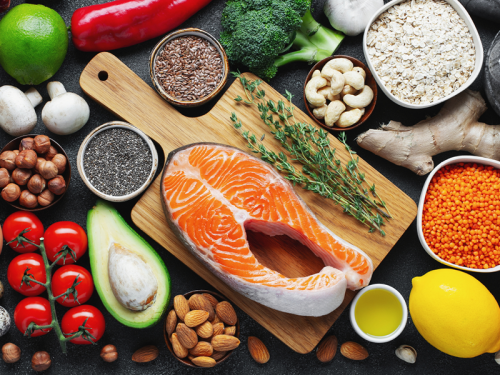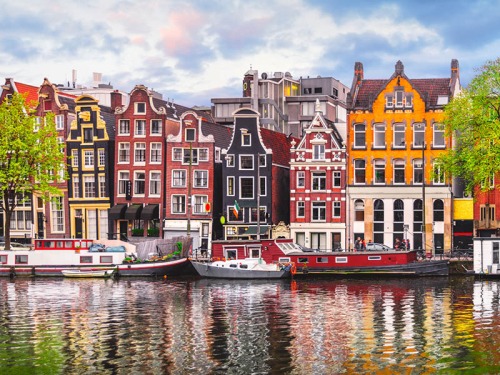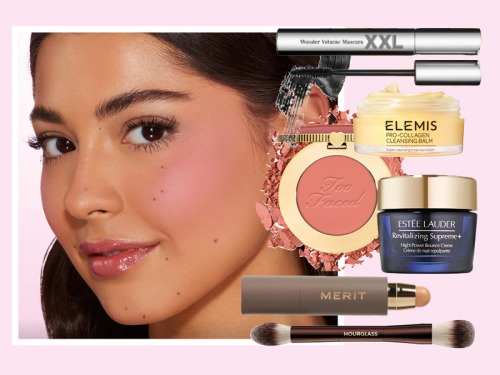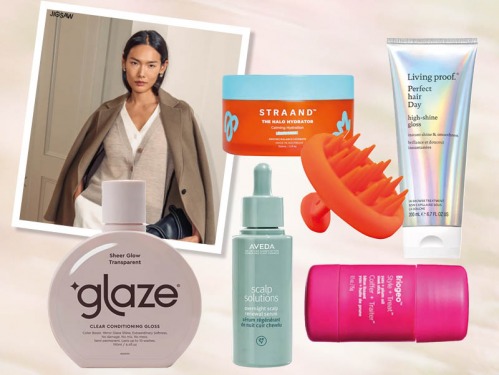Meet the Entrepreneur Making Cool Crutches Used By Victoria Beckham
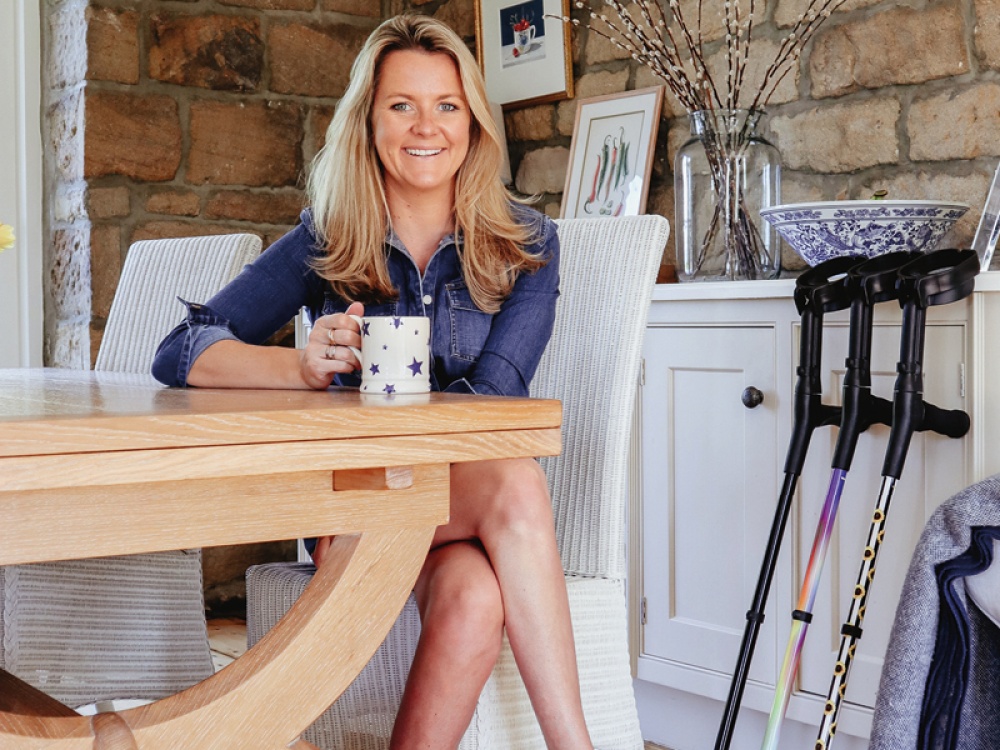
After a life-changing injury, Amelia Peckham and her mum designed their first pair of Cool Crutches to improve the comfort and safety of mobility aids
At 19, Amelia suffered a spinal injury in a quad biking accident. ‘It was obviously agonising and the worst pain I’d ever had but I didn’t really know what I’d done.’ In hospital, Amelia was told she would never walk again without an aid. ‘They said I’d be able to get some feeling and movement back and they thought I’d be able to stand on crutches or was going to need a wheelchair. That was the lowest point,’ she says. ‘I completely ignored all of the information. The only thing I listened to was crutches.’
Having lost feeling and movement from her waist down, Amelia faced recovery and rehabilitation. ‘When I got to the bars, where you learn to walk again, I thought I’d stand up and be able to do it but I had no power, no muscles – nothing from my waist down,’ she recalls. ‘Everything was going through my hands. Slowly, I did start to get more strength in my arms but at the same time I got blisters in my hands, which got infected. My mum said “hang on, you’ve got one part of your body that isn’t affected by the nerves that you’ve damaged and that’s your hands and this is now the reason you’re not going to walk or do physio. This doesn’t make sense. There must be something that someone’s done with crutches that makes them comfortable. Don’t panic. Let’s see what we can find”. That was the first seed I guess. Mum did all of it; she was like a dog with a bone; while I was in hospital with a laptop.’
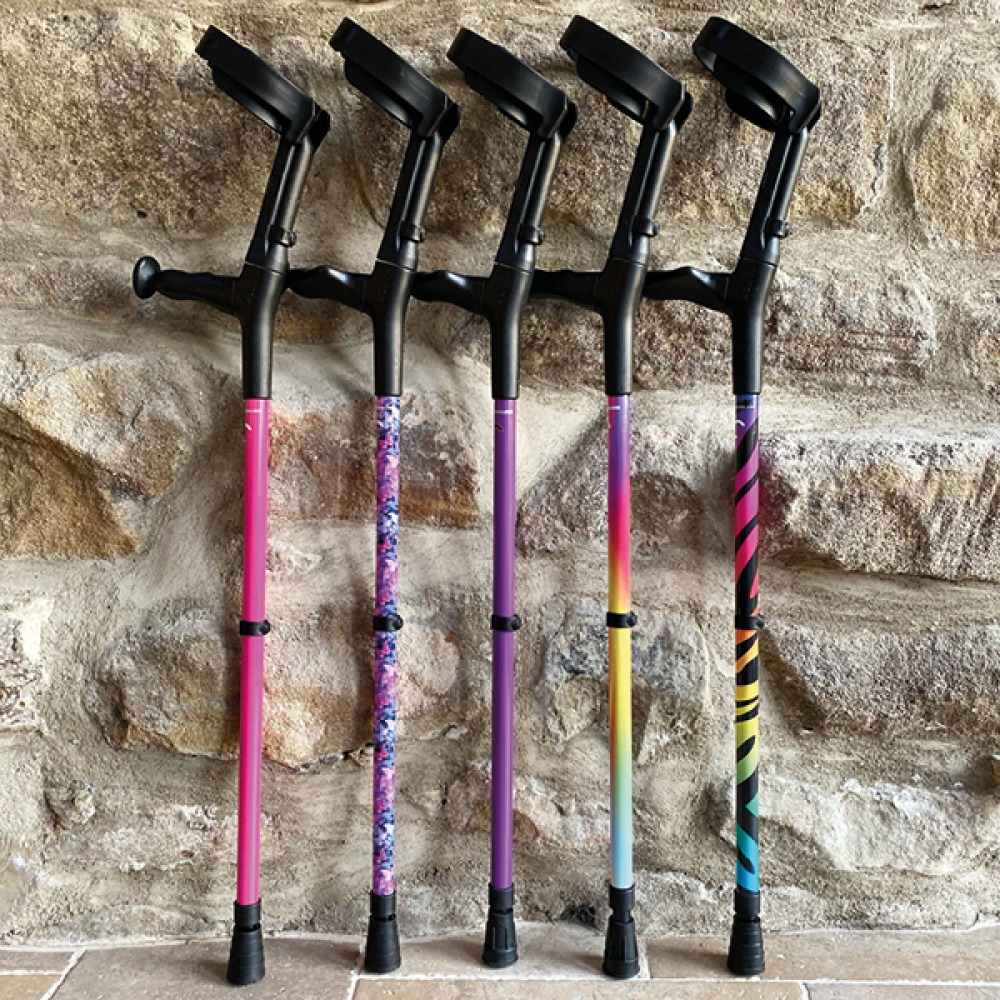
The two of them began their search for soft-grip, well-designed crutches. ‘People in America use underarm crutches, in Europe they use ones that don’t have a full cuff – no one had done it,’ says Amelia. ‘Everyone in physio with me was going to be using crutches long-term.’
With no luck of finding any suitable crutches, Amelia and her mum Clare decided to design their own. ‘Suddenly everything that was negative was exciting and positive,’ says Amelia. ‘Everything we talked about was being able to make moulded handles, giving two options when it comes to a cuff, and shock absorption that will stop the jarring shoulder pain and neck pain. Everyone was so excited. I had all the doctors in my remit and a whole room of other people like me, who were facing long-term serious conditions and injuries, willing to try them out – and the combination meant we got to test drive around 20 different types of crutches. It was also the biggest distraction for all of us. It was just amazing.
‘We did eventually get a prototype of the dream pair and I really wanted it to not be noticeable or draw any attention, so we made it head to toe in black. It looked really smart and sleek and didn’t invite any intrusive questions. I took it back into physio and they said, “it’s brilliant, we love it, but can we not have spots or stripes, or red or blue, or leopard print? We’re all 18 months down the line and don’t spend money on shoes anymore – I’d quite like an array of crutches”. That did not even occur to me, but how exciting that I was going to get to a point where that would be me, and I would want to treat them like shoes. We found a way to colour them and we launched with a few different designs. Everyone in hospital bought them and it was just an electric excitement – we sold out!
‘We didn’t ever intend for this to be a full-time business, we just wanted to help the people in our immediate proximity. All the marketing we did was to put flyers in waiting rooms in hospitals, it was basically word-of-mouth.’
In 2016 Amelia was working in London and made the decision to move to the Yorkshire countryside. 'This was the life that was going to support my health physically and mentally in the best way possible,’ she says. Whilst working part-time remotely, and with support from her boss, Amelia’s focus returned to Cool Crutches.
‘My dad sadly tripped and smashed his pelvis in eight places in about 2017 and was then diagnosed with osteoporosis and was told he would need a walking aid. But he couldn’t use crutches because if he fell and his arm got caught it would almost certainly break. It had to be a walking stick, but the ones available were all made in China, mass produced, not certified for medical use, and gave him blisters. So we did exactly what we did with crutches using the same concept. It had a moulded handle which didn’t give him blisters, it was solid, certified and would last for the rest of his life – he absolutely loved it. He was really happy and mum said I think we should sell them. Google walking stick and there are so many companies, the market is saturated, but we asked our customers and many of them used both [crutches and walking sticks], so we got a small collection in black and they sold out. Almost overnight, we saw a whole new market of people.’
With Covid lockdown and Amelia’s maternity leave, Cool Crutches & Walking Sticks was put on hold. ‘People with disabilities, who are 80 percent of our community, were isolating, and when no one’s going out, we thought no one would be buying walking aids – but we actually made more profit in the year of Covid than we had done the year before,’ says Amelia. ‘I realised this is going to continue to grow [even] if we do nothing. If I took it on full-time there’s a huge amount of opportunity and number of people we could genuinely help… I’m only walking, had babies and have done everything I’ve done because of our crutches. It just would not have happened without them. I know [that] from first-hand experience, but also the feedback we’ve had was so phenomenal that I suddenly realised the more people we get to use them, the more likely we are to change the whole community. That’s what really got me excited.’
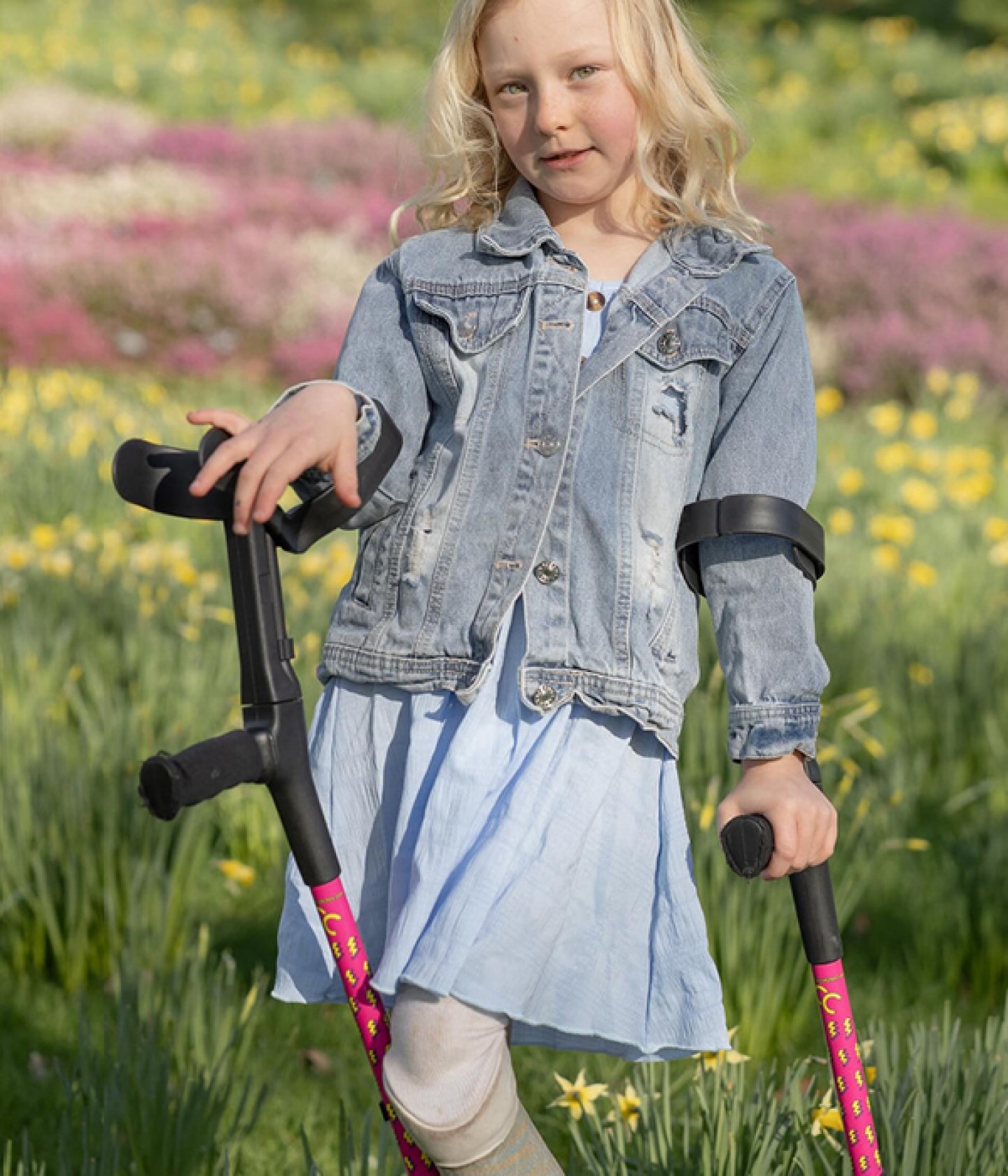
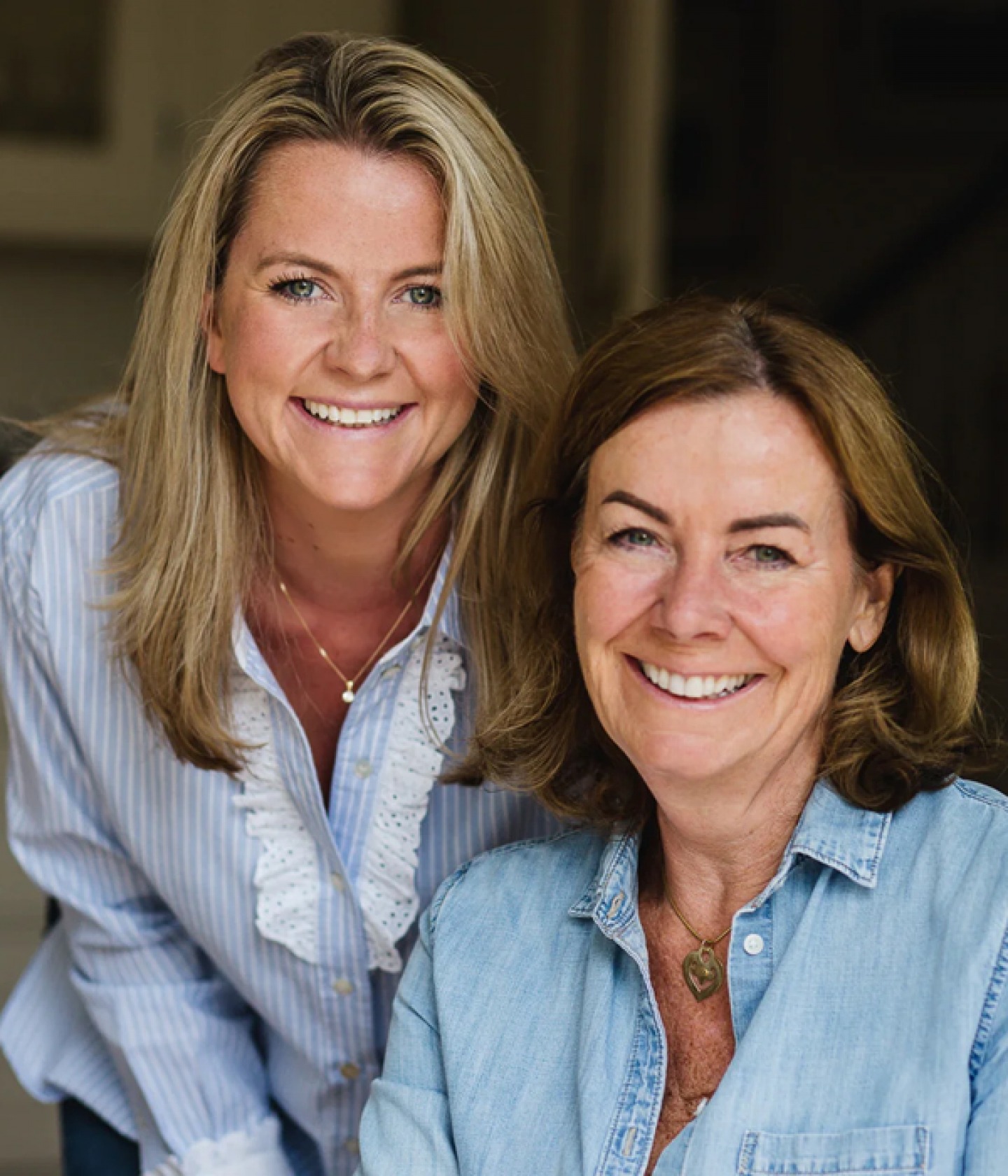
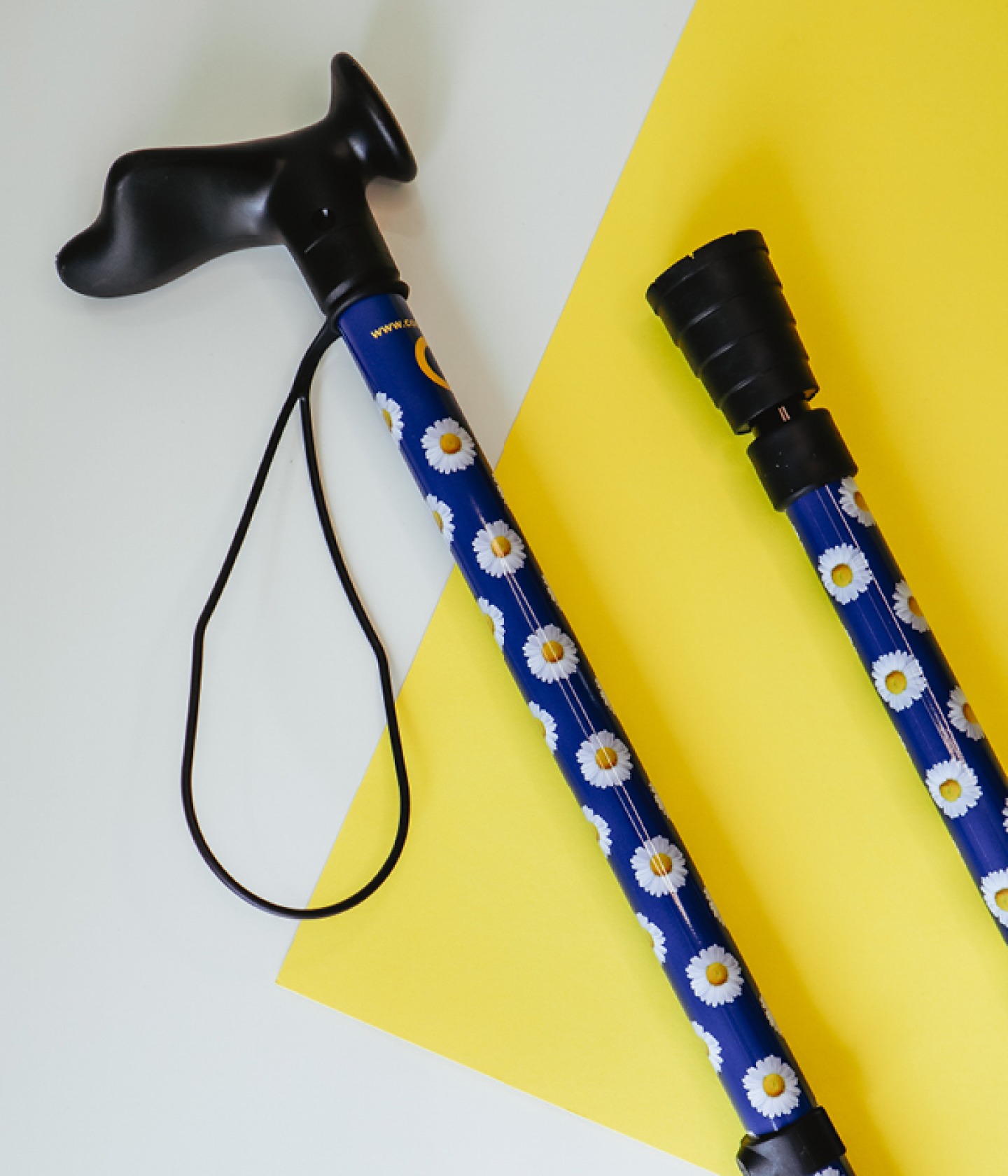
Amelia took on Cool Crutches & Walking Sticks full-time in 2021 and says it ‘sky rocketed’. ‘Amanda Holden and Prue Leith had used them before this, then we had Olly Murs and Jonny Bairstow,’ she adds. ‘Social media really ramped up after Covid, and the community we’d built was absolutely phenomenal – and they were all people like me, so it was like talking to friends as opposed to customers. Almost accidentally, it exploded, and we now have this big business but it’s still what it was at the beginning – trying to help people feel more confident and more comfortable. The thing now is that we’ve done it backwards. I talk to a lot of other founders and they say if I came to them with this business idea they would tell us to go B2B, but we’ve nailed the hardest thing which is to go direct to a consumer.’
This year Cool Crutches & Walking Sticks launched their children’s crutches range. ‘Since I’ve become a parent I’ve realised what happens when children need walking aids and the reality is pretty horrendous,’ says Amelia. ‘I hope we keep developing new products and I hope we keep expanding in terms of who we sell to and how.
'Our biggest thing [now] is to make them more available and accessible to more people. I’ve done a bit of work with the NHS trust in Huddersfield who are developing a massive research department and trying to put more resource and support in for people with disabilities in the North. I’d really like to do more locally than we have done perhaps until now. Overseas would be the next thing – we have a lot of demand in Australia and the US and to find a way to make that happen would be mega.’






